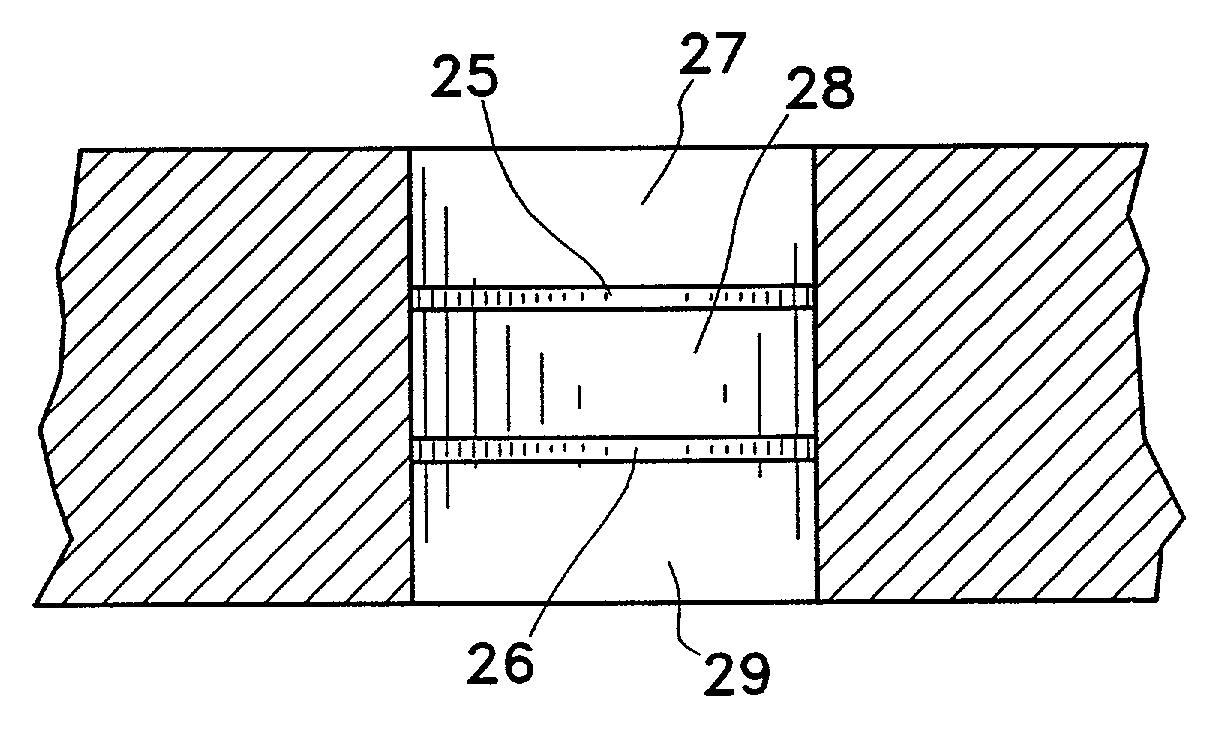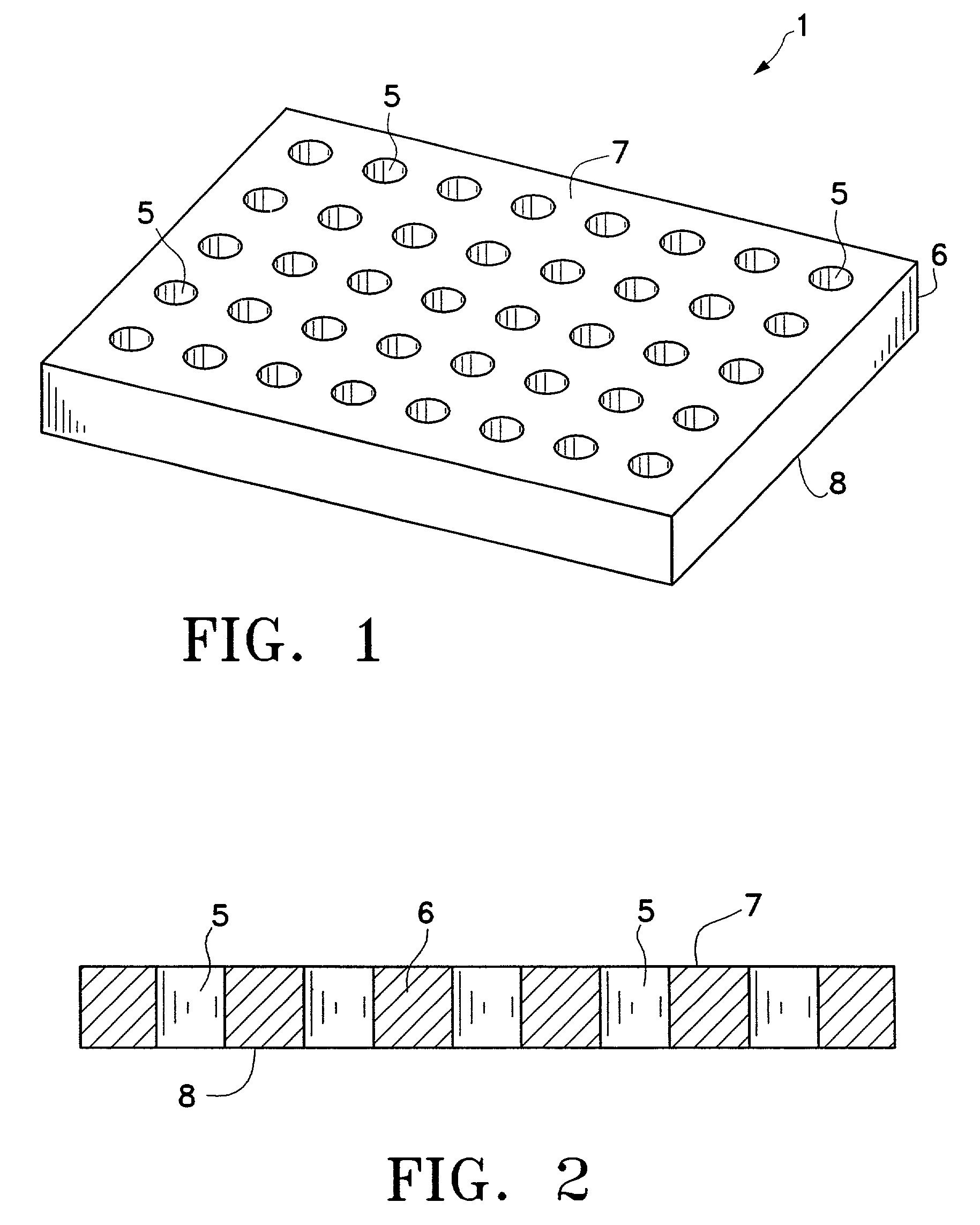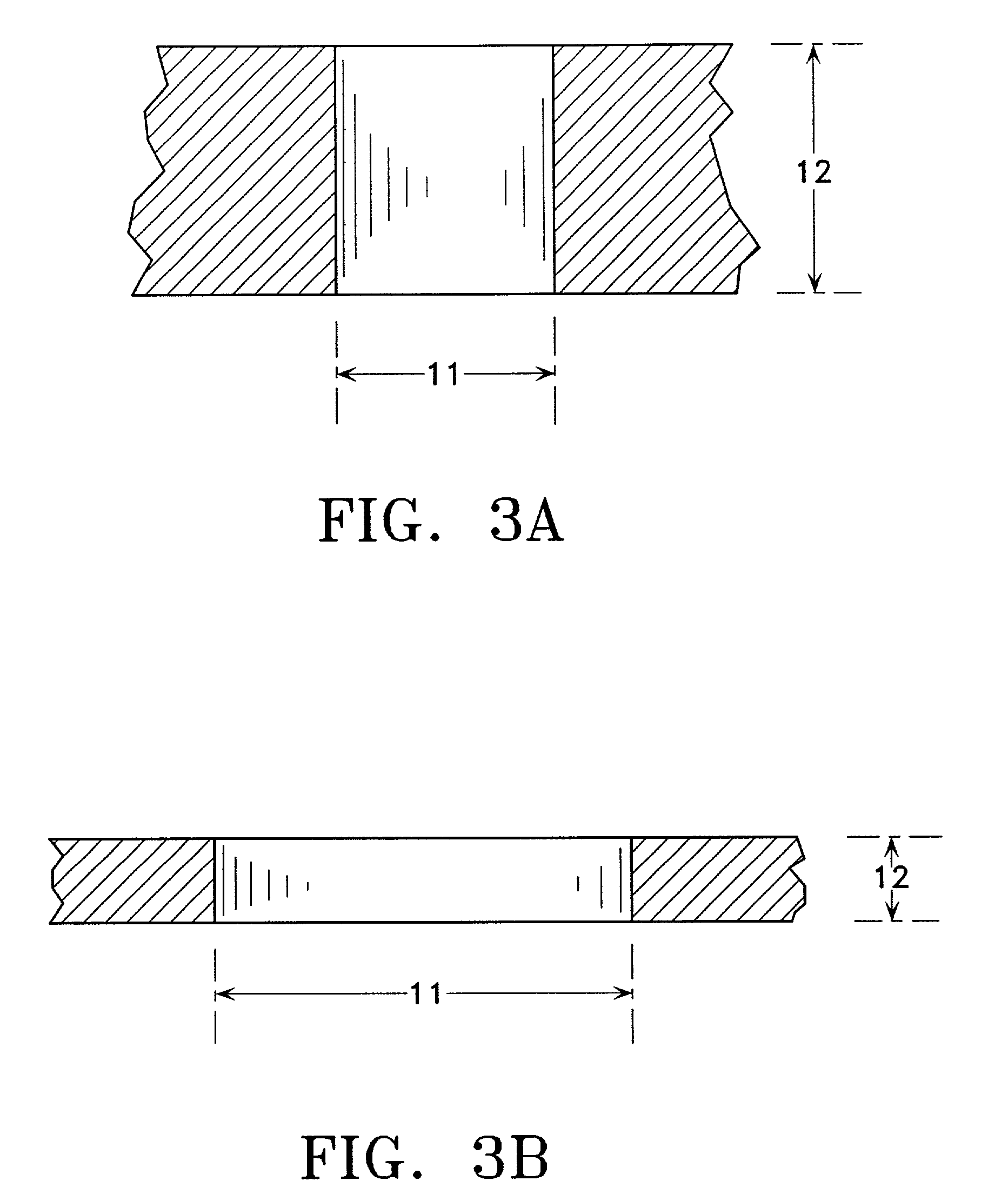Apparatus and methods for parallel processing of micro-volume liquid reactions
a liquid reaction and micro-volume technology, applied in the field of apparatus and methods for parallel processing of micro-volume liquid reactions, can solve the problems of evaporative loss of reaction solution, inability to use the current reaction chamber, and difficulty in adding and removing reaction mixtures from the reaction chamber, so as to facilitate the display and/or storage of multiple micro-volume samples.
- Summary
- Abstract
- Description
- Claims
- Application Information
AI Technical Summary
Benefits of technology
Problems solved by technology
Method used
Image
Examples
example 1
PCR-mediated Analysis of CAG Repeat Length in the Human hSK Gene
[0150]A 10 ml aliquot of 2X PCR mastermix is prepared from commercially available components (e.g. GeneAmp® PCR Reagent Kit with AmpliTaq® DNA Polymerase; PE Biosystems, Foster City, Calif.) and custom oligonucleotide primers.
[0151]The master mix contains each of the following components at 1.6-times the desired final concentration:
[0152]
Deoxynucleotides (dATP, dCTP, dGTP, TTP (or UTP))A forward primer:FrwCAG2: GGA CCC TCG CTG CAG CCT CAA reverse primer:RewCAG2: GCA AGT GGT CAT TGA GAT TGA GCT GCC T
[0153]A thermostable DNA polymerase (e.g. AmpliTaq® DNA Polymerase)
[0154]A buffer
[0155]MgCl2
[0156]Using a Hamilton 4000 robot, 1.7 μl of mastermix is dispensed into each of 576 microholes (24 rows and 24 columns) in a solid substrate (the microhole apparatus). The holes occur in the shape of a right circular cylinder of 1.2 mm diameter and 1.6 mm height. The microhole apparatus is suspended such that its lower face is shallo...
example 2
[0161]Template MRNA (or total RNA) is prepared from the tissue(s) of human patients of interest e.g. using an RNeasy 96 BioRobot Kit (QIAGEN Inc., Valencia, Calif.). The RNA is combined with a mix containing reagents for reverse transcription and PCR amplification (e.g., GeneAmp® Gold RNA PCR Reagent Kit, PE Biosystems, Foster City, Calif.), excluding sequence-specific oligonucleotides and probes, such that the reagents are present at 1.6 times the desired final concentration. 1.7 μl of template / reagent mix is dispensed into each of 576 microholes in a microhole apparatus (the apparatus, as described above). Immediately following dispensing of the template, 1 μl of mineral oil is dispensed on top of each microhole.
[0162]Alternatively, the apparatus is touched or immersed in a reservoir of template RNA / reagent mix so that each microhole is filled with RNA / reagent mix (volume 1.7 μl). The substrate is then shallowly immersed in mineral oil so that it is submerged to...
example 3
Microhole PCR with Pre-affixed Oligonucleotide Primers and In-situ Fluorescent Detection
[0169]PCR amplification of Lambda phage was performed in a microhole array with hole diameters of 1.0 mm and a titanium plate thickness of 1.1 mm. The titanium plate 1 was wrapped at the ends with aluminum tape 71 (FIG. 7) to ensure thermal contact of the plate to the heat block of a modified Perkin-Elmer 480 (PE480) thermal cycler while preventing physical contact between the heat block and the reactions contained in the holes. The PE480 thermal cycler was modified by cutting a channel across the width of the heater block to allow insertion and thermal cycling of microhole array plates. The channel was 2.4 mm wide, 18.8 mm deep and cut across the entire face of the heat block, a distance of 90 mm. The open ends of the channel were filled with heat conductive silicone caulk (Ultra Copper, Loctite Corporation, Rocky Hill, Conn.) and the cured assembly was filled with laboratory grade mineral oil (...
PUM
| Property | Measurement | Unit |
|---|---|---|
| volumes | aaaaa | aaaaa |
| aspect ratio | aaaaa | aaaaa |
| aspect ratio | aaaaa | aaaaa |
Abstract
Description
Claims
Application Information
 Login to View More
Login to View More - R&D
- Intellectual Property
- Life Sciences
- Materials
- Tech Scout
- Unparalleled Data Quality
- Higher Quality Content
- 60% Fewer Hallucinations
Browse by: Latest US Patents, China's latest patents, Technical Efficacy Thesaurus, Application Domain, Technology Topic, Popular Technical Reports.
© 2025 PatSnap. All rights reserved.Legal|Privacy policy|Modern Slavery Act Transparency Statement|Sitemap|About US| Contact US: help@patsnap.com



